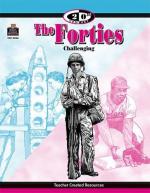|
This section contains 647 words (approx. 3 pages at 300 words per page) |

|
Discovery of Radar.
Though the principles of radar — an acronym for radio detection and ranging — were understood in the early 1930s, its application in the United States was slow to develop. In 1930 Lawrence Hyland of the Naval Research Laboratory observed that radio signals transmitted from the ground were reflected back by passing airplanes and showed up on a radio-wave detection screen. This discovery opened up the possibility of developing a system to detect and locate aircraft. The U.S. Army did not recognize the importance of radar until 1936, when it established a radar research unit at the U.S. Army Signal Corps laboratory in Fort Monmouth, New Jersey. Research moved slowly because the navy classified pulse-radar research as secret, preventing the navy and army from exchanging information.
The Tizard Mission.
After the outbreak of World War II Great Britain helped to strengthen U.S. radar...
|
This section contains 647 words (approx. 3 pages at 300 words per page) |

|




